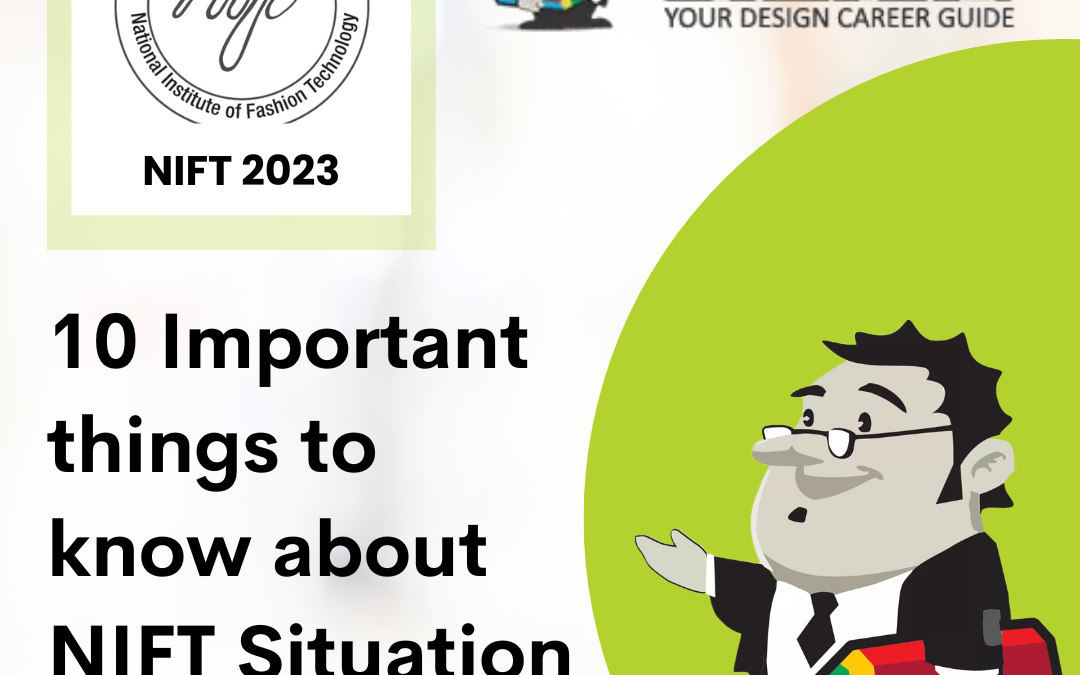The National Institute of Fashion Technology (NIFT) entrance exam is a gateway for aspiring designers to enter the world of fashion. After clearing the written exams (CAT and GAT), candidates aiming for B.Des programs face the crucial Situation Test. This test evaluates your practical skills, creativity, and ability to work with materials. Here are 10 important things to know about the NIFT Situation Test 2025:
- What is the Situation Test?
The Situation Test is a hands-on, three-dimensional evaluation where candidates are given a set of materials and a specific problem statement. They need to create a model or prototype within a given time frame. This test assesses your:
- Material Handling: How effectively you use the provided materials.
- Creative and Innovative Thinking: Your ability to come up with unique and original solutions.
- Space Visualization: Your understanding of spatial relationships and how you translate ideas into 3D forms.
- Composition and Construction Skills: Your ability to create a well-composed and structurally sound model.
- Overall Presentation: The neatness, finish, and overall impact of your creation.
- Materials Provided:
NIFT provides a variety of materials, which can include:
- Paper: Different types, colors, and textures (e.g., chart paper, colored paper, tissue paper, handmade paper)
- Cardboard: Corrugated cardboard, mount board
- Thermocol: Sheets, balls
- Wire: Different gauges and types (e.g., aluminum wire)
- Thread: Different colors and thicknesses
- Cloth pieces: Scraps of various fabrics
- Adhesive: Glue sticks, fevicol
- Scissors:
- Other basic craft supplies: Straws, ice cream sticks, pins, buttons, etc.
Important Note: You cannot bring your own materials. You must work with what is provided.
- Exam Pattern of NIFT Situation Test:
- Nature of the Test: Hands-on, 3D model making
- Duration: Typically 2 hours
- Materials: Provided by NIFT at the test center
- Problem Statement: A specific design problem or theme given to candidates
- Evaluation Criteria:
- Material handling
- Creative and innovative thinking
- Space visualization
- Composition and construction skills
- Overall presentation
- Write-up explanation
- Time Limit:
The Situation Test typically has a time limit of 2 hours. Time management is crucial. Practice creating models within a strict timeframe during your preparation.
- Focus on the Problem Statement:
Carefully read and understand the problem statement. Your model should directly address the given problem or theme. Don’t get carried away with elaborate designs that deviate from the core requirement.
- Emphasis on Creativity and Innovation:
The examiners look for originality and innovative use of materials. Think outside the box and try to come up with unique solutions. Don’t just replicate existing designs.
- Importance of Neatness and Finish:
While creativity is essential, the neatness and finish of your model also matter. A well-constructed and neatly finished model demonstrates your attention to detail and presentation skills.
- Write-up Explanation:
After creating the model, you’ll be asked to write a brief explanation of your concept and the process you followed. This write-up should clearly articulate your idea, the materials used, and the design decisions you made.
- Practice with Previous Years’ Papers:
Solving previous years’ Situation Test papers is highly beneficial. It helps you understand the types of questions asked, the materials provided, and the expected level of creativity.
- Develop Time Management Skills:
Practice creating models within the given time limit. This will help you manage your time effectively during the actual test.
- Stay Calm and Confident:
The Situation Test can be stressful, but staying calm and confident is crucial. Trust your preparation and focus on executing your ideas to the best of your ability.
Key Takeaways for Preparation:
- Practice working with different materials and experiment with various construction techniques.
- Develop your space visualization and 3D modeling skills.
- Focus on generating original ideas and translating them into tangible forms.
- Practice writing clear and concise explanations of your designs.
- Manage your time effectively during practice and the actual test.
By keeping these points in mind and preparing diligently, you can confidently tackle the NIFT Situation Test 2025 and take a step closer to your design aspirations.

